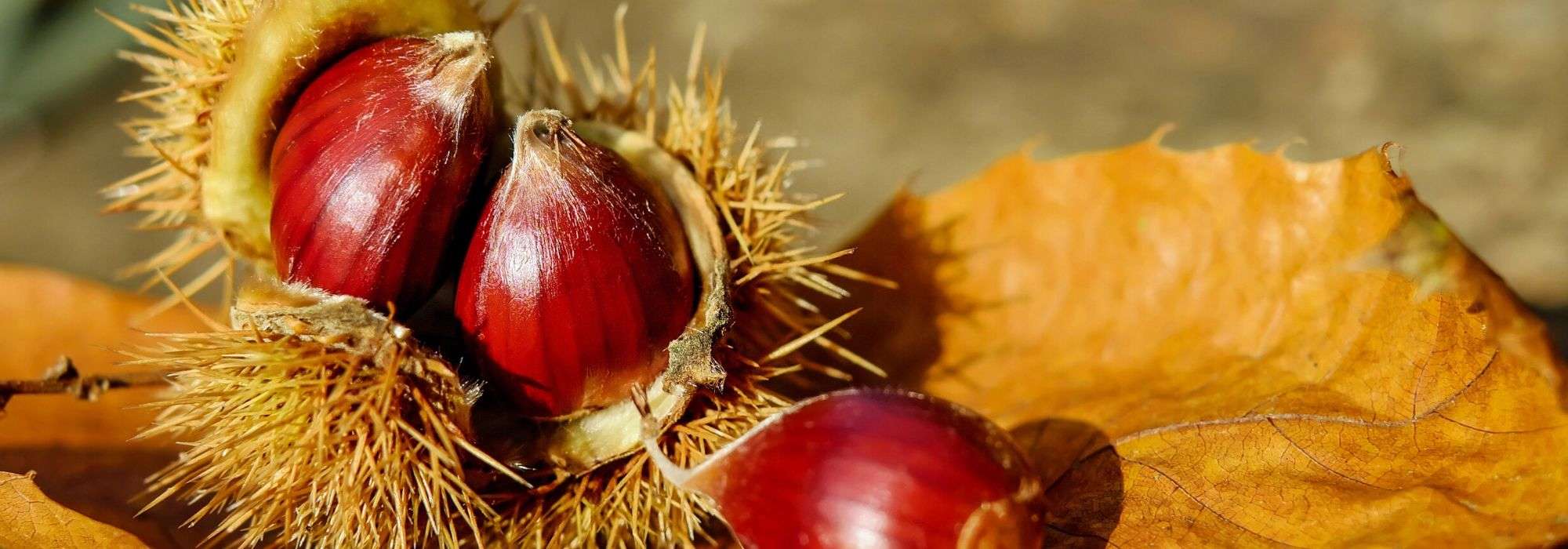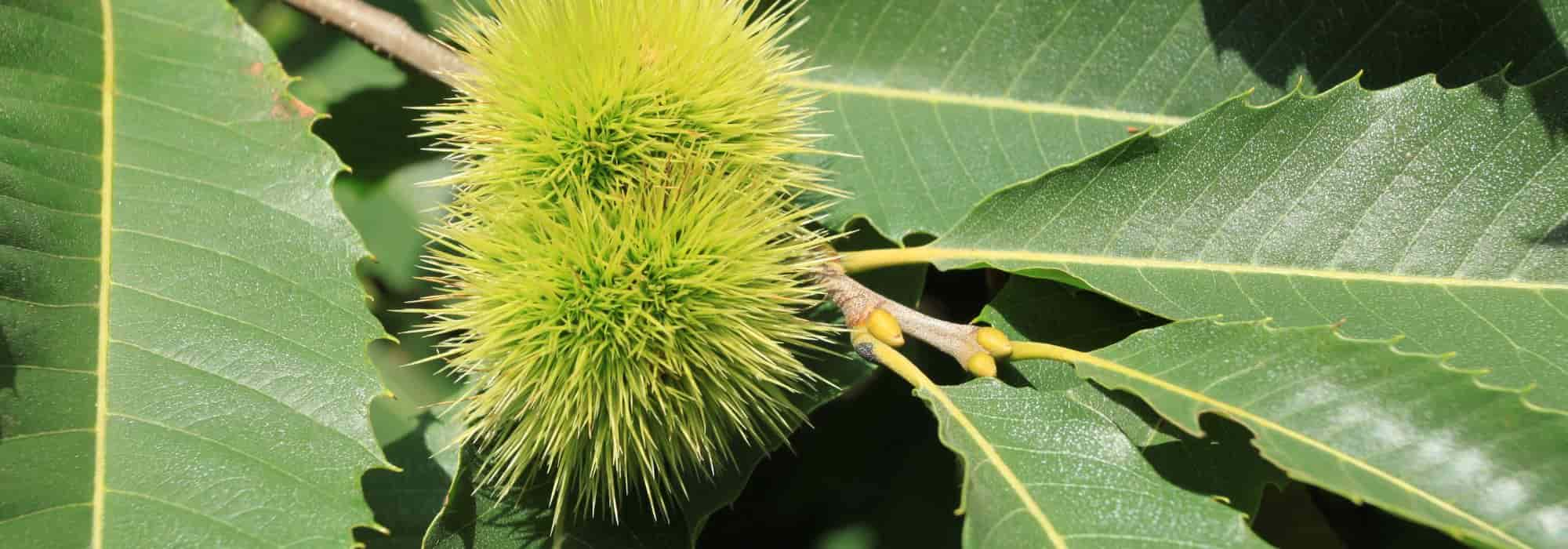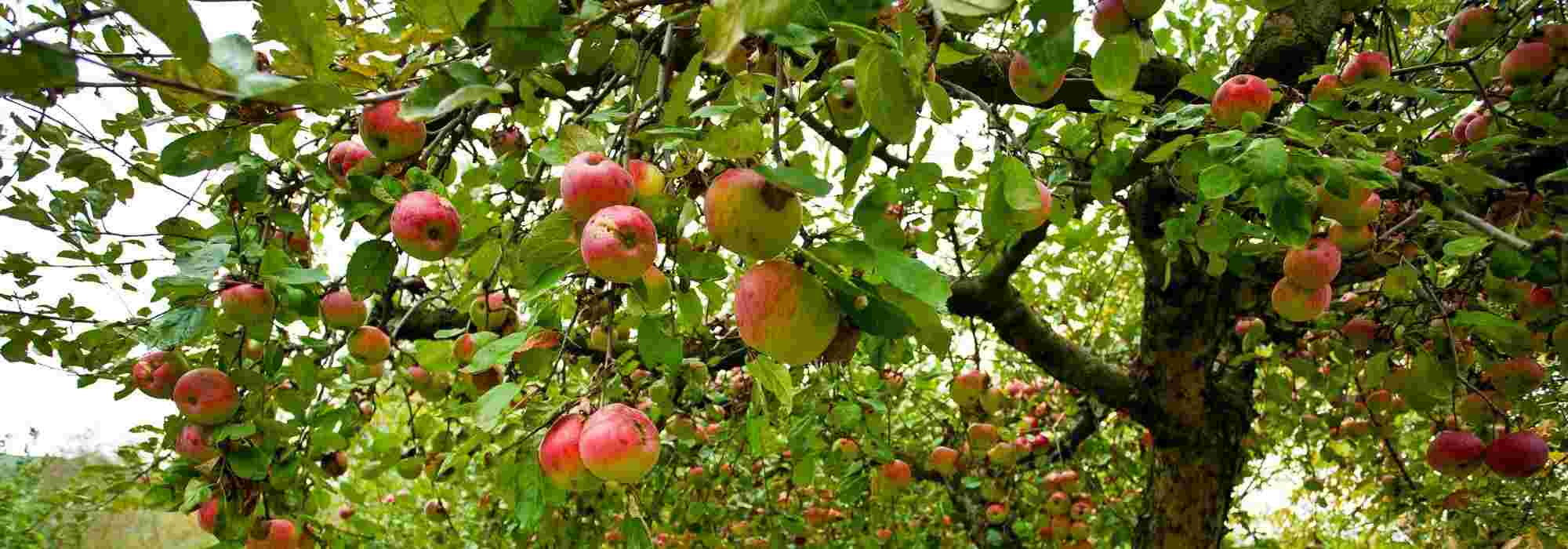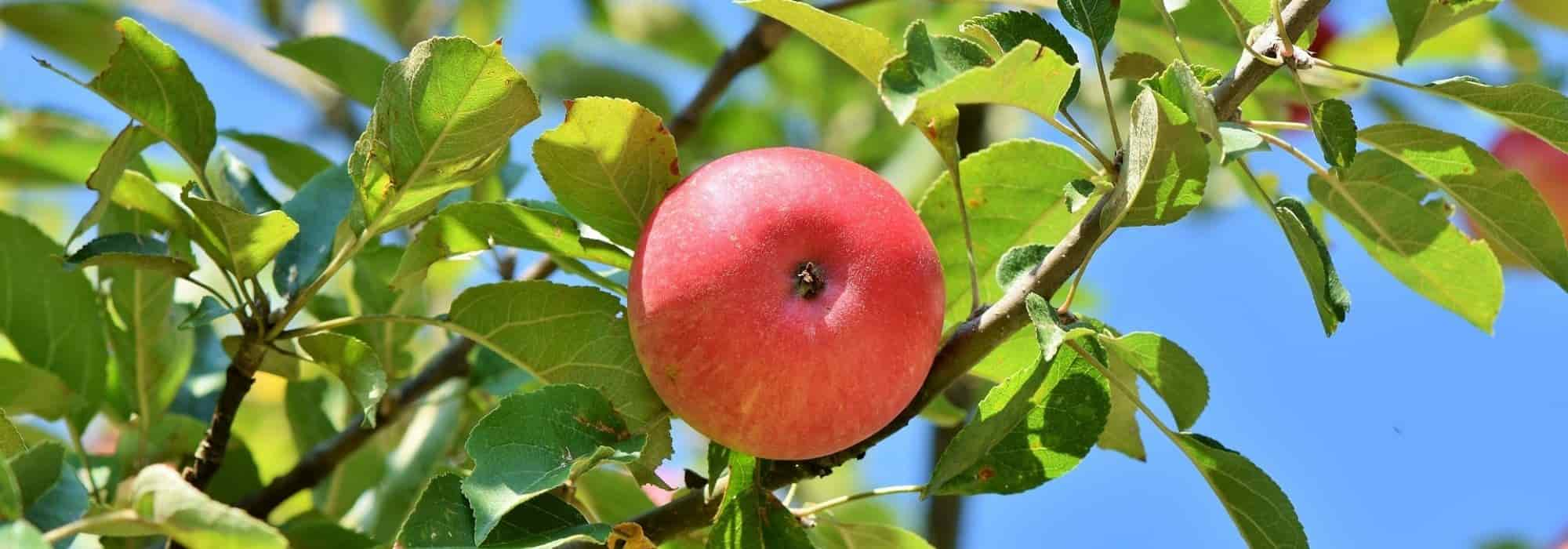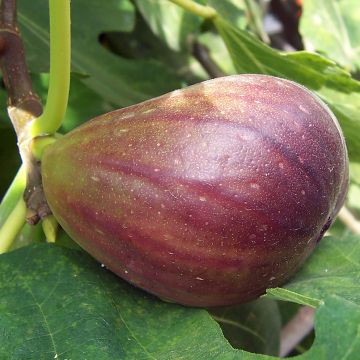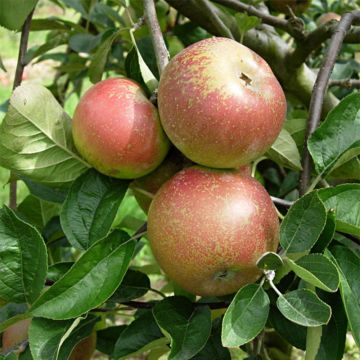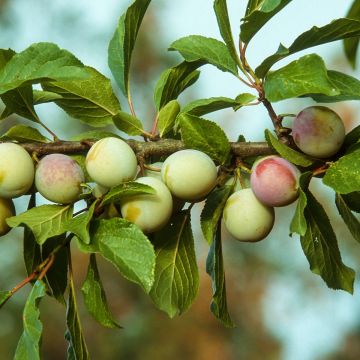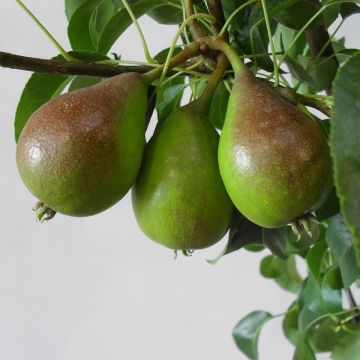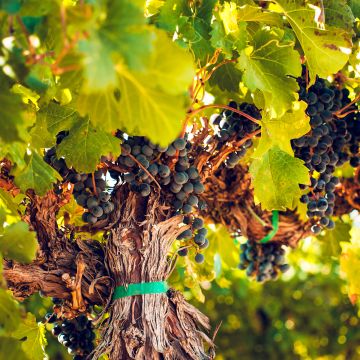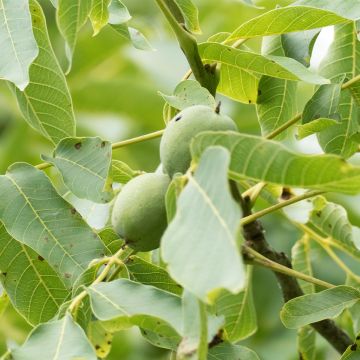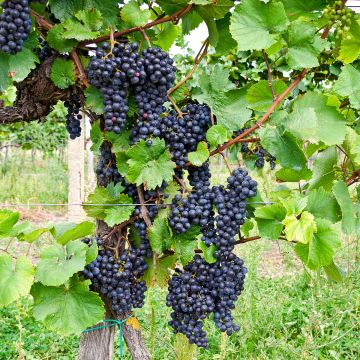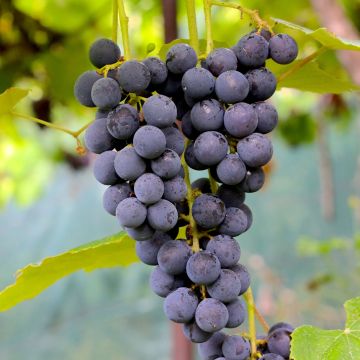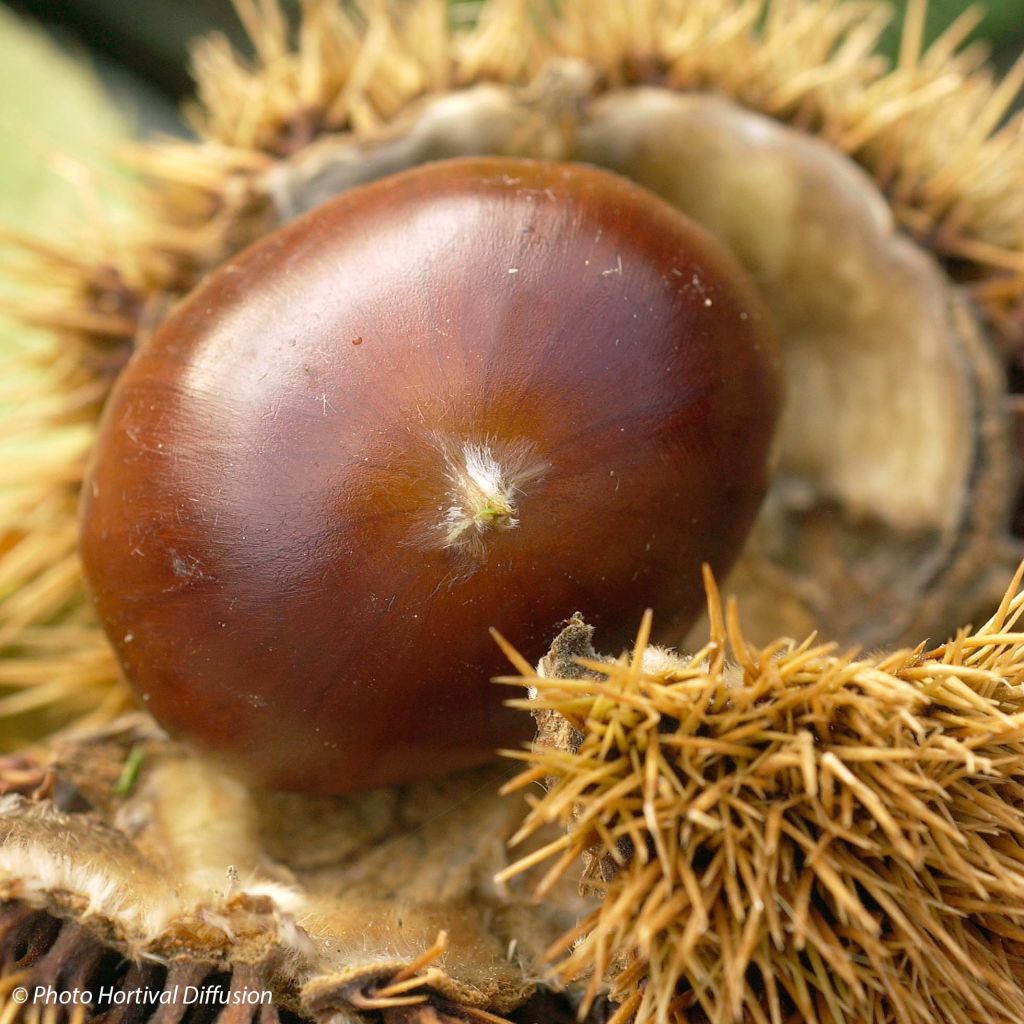

Chestnut Marigoule - Castanea sativa
Chestnut Marigoule - Castanea sativa
Castanea sativa Marigoule
Sweet Chestnut, Spanish Chestnut
Special offer!
Receive a €20 voucher for any order over €90 (excluding delivery costs, credit notes, and plastic-free options)!
1- Add your favorite plants to your cart.
2- Once you have reached €90, confirm your order (you can even choose the delivery date!).
3- As soon as your order is shipped, you will receive an email containing your voucher code, valid for 3 months (90 days).
Your voucher is unique and can only be used once, for any order with a minimum value of €20, excluding delivery costs.
Can be combined with other current offers, non-divisible and non-refundable.
This plant carries a 6 months recovery warranty
More information
We guarantee the quality of our plants for a full growing cycle, and will replace at our expense any plant that fails to recover under normal climatic and planting conditions.
Description
The 'Marigoule' Chestnut Tree, a hybrid variety obtained from Castanea sativa, the European species, and Castanea crenata, the Japanese species. Chestnut trees are large trees that bear edible chestnuts. The 'Marigoule' variety is cultivated in the southwest and in Brittany for its disease resistance and the firm and sweet flesh of its large fruits.
Chestnuts belong to the beech family. The tree can reach up to 30 m (98ft) in height after many years, and in 15 years it can reach ten metres, so it is reserved for large spaces. It provides beautiful shade in summer. The flowering includes long male catkins and very discreet female flowers that bloom separately. It is a sought-after species because its wood is resistant to weather and time without treatment. The 'Marigoule' Chestnut Tree is particularly vigorous and its wood is of excellent quality, these two characteristics make it a choice species for reforestation.
The chestnuts (or marrons) of the 'Marigoule' variety are considered particularly large, the beautiful colour of the peel is very appetizing, it sports a shiny dark mahogany colour, promising a real feast. The chestnut is a very special fruit, loved or hated, no one is indifferent to the woody flavor of this large seed that is a bit difficult to obtain. You will need gloves or a stick to get them out of their prickly burr once they have fallen to the ground. They ripen in September or October. Once the seeds are harvested, the bravest will embark on making the famous chestnut cream, but you can also roast them in a pan as they are an instant pleasure. Blanched, candied, or braised, the well-peeled almond accompanies savoury dishes during Christmas festivities. Do not confuse the Chestnut Tree with the Horse Chestnut, as the chestnuts of the latter are not edible!
The 'Marigoule' Castanea sativa requires space, it fears stagnant humidity more than other varieties, and it is also a bit sensitive to cold. Hardy, it is actually the spring frosts that it fears the most. However, it is resistant to ink disease and rust. It will become a very beautiful majestic and vigorous tree if the growing conditions are suitable. It will be cultivated in full sun in an acidic, deep, and sandy soil. To ensure good fruiting, this tree will need the proximity of another chestnut species. Castanea sativa 'Marron de Lyon' is another very interesting variety in terms of its production that would be perfect for this purpose.
Chestnut Marigoule - Castanea sativa in pictures
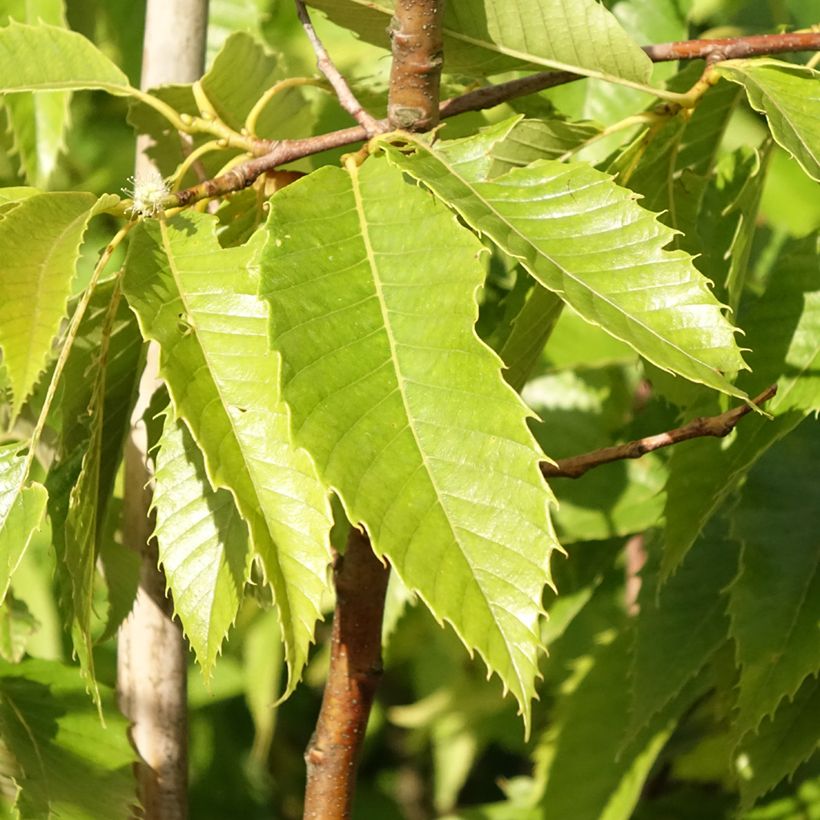

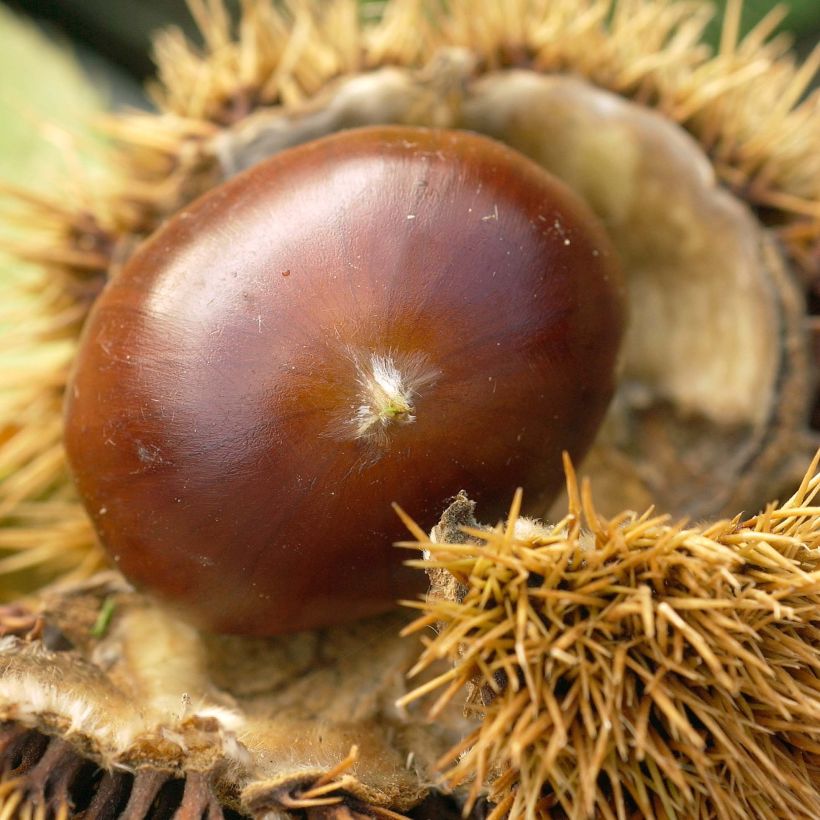

Plant habit
Fruit
Flowering
Foliage
Botanical data
Castanea
sativa
Marigoule
Fagaceae
Sweet Chestnut, Spanish Chestnut
Cultivar or hybrid
Planting and care
Plant the Castanea sativa 'Marigoule' in a deep and acidic soil, especially not limestone. The planting hole must be much wider than the subject you are planting. Choose the location carefully as the chestnut tree dislikes being transplanted. Do not bury the base of the trunk. Water it generously at the beginning to promote establishment. Pruning should be light, but in order to be able to pass underneath when it is mature, remove the lower branches as they grow. Avoid pruning branches that are too large in diameter. Harvest takes place in October or at the very end of September, crack open the fallen burrs on the ground by tapping them with a stick or open them with very thick gloves to extract the chestnuts. These fresh fruits are perfect for making chestnut cream, but they can be stored all winter in a dry and well-ventilated place.
Planting period
Intended location
Care
Planting & care advice
-
, onOrder confirmed
Reply from on Promesse de fleurs
Similar products
Haven't found what you were looking for?
Hardiness is the lowest winter temperature a plant can endure without suffering serious damage or even dying. However, hardiness is affected by location (a sheltered area, such as a patio), protection (winter cover) and soil type (hardiness is improved by well-drained soil).

Photo Sharing Terms & Conditions
In order to encourage gardeners to interact and share their experiences, Promesse de fleurs offers various media enabling content to be uploaded onto its Site - in particular via the ‘Photo sharing’ module.
The User agrees to refrain from:
- Posting any content that is illegal, prejudicial, insulting, racist, inciteful to hatred, revisionist, contrary to public decency, that infringes on privacy or on the privacy rights of third parties, in particular the publicity rights of persons and goods, intellectual property rights, or the right to privacy.
- Submitting content on behalf of a third party;
- Impersonate the identity of a third party and/or publish any personal information about a third party;
In general, the User undertakes to refrain from any unethical behaviour.
All Content (in particular text, comments, files, images, photos, videos, creative works, etc.), which may be subject to property or intellectual property rights, image or other private rights, shall remain the property of the User, subject to the limited rights granted by the terms of the licence granted by Promesse de fleurs as stated below. Users are at liberty to publish or not to publish such Content on the Site, notably via the ‘Photo Sharing’ facility, and accept that this Content shall be made public and freely accessible, notably on the Internet.
Users further acknowledge, undertake to have ,and guarantee that they hold all necessary rights and permissions to publish such material on the Site, in particular with regard to the legislation in force pertaining to any privacy, property, intellectual property, image, or contractual rights, or rights of any other nature. By publishing such Content on the Site, Users acknowledge accepting full liability as publishers of the Content within the meaning of the law, and grant Promesse de fleurs, free of charge, an inclusive, worldwide licence for the said Content for the entire duration of its publication, including all reproduction, representation, up/downloading, displaying, performing, transmission, and storage rights.
Users also grant permission for their name to be linked to the Content and accept that this link may not always be made available.
By engaging in posting material, Users consent to their Content becoming automatically accessible on the Internet, in particular on other sites and/or blogs and/or web pages of the Promesse de fleurs site, including in particular social pages and the Promesse de fleurs catalogue.
Users may secure the removal of entrusted content free of charge by issuing a simple request via our contact form.
The flowering period indicated on our website applies to countries and regions located in USDA zone 8 (France, the United Kingdom, Ireland, the Netherlands, etc.)
It will vary according to where you live:
- In zones 9 to 10 (Italy, Spain, Greece, etc.), flowering will occur about 2 to 4 weeks earlier.
- In zones 6 to 7 (Germany, Poland, Slovenia, and lower mountainous regions), flowering will be delayed by 2 to 3 weeks.
- In zone 5 (Central Europe, Scandinavia), blooming will be delayed by 3 to 5 weeks.
In temperate climates, pruning of spring-flowering shrubs (forsythia, spireas, etc.) should be done just after flowering.
Pruning of summer-flowering shrubs (Indian Lilac, Perovskia, etc.) can be done in winter or spring.
In cold regions as well as with frost-sensitive plants, avoid pruning too early when severe frosts may still occur.
The planting period indicated on our website applies to countries and regions located in USDA zone 8 (France, United Kingdom, Ireland, Netherlands).
It will vary according to where you live:
- In Mediterranean zones (Marseille, Madrid, Milan, etc.), autumn and winter are the best planting periods.
- In continental zones (Strasbourg, Munich, Vienna, etc.), delay planting by 2 to 3 weeks in spring and bring it forward by 2 to 4 weeks in autumn.
- In mountainous regions (the Alps, Pyrenees, Carpathians, etc.), it is best to plant in late spring (May-June) or late summer (August-September).
The harvesting period indicated on our website applies to countries and regions in USDA zone 8 (France, England, Ireland, the Netherlands).
In colder areas (Scandinavia, Poland, Austria...) fruit and vegetable harvests are likely to be delayed by 3-4 weeks.
In warmer areas (Italy, Spain, Greece, etc.), harvesting will probably take place earlier, depending on weather conditions.
The sowing periods indicated on our website apply to countries and regions within USDA Zone 8 (France, UK, Ireland, Netherlands).
In colder areas (Scandinavia, Poland, Austria...), delay any outdoor sowing by 3-4 weeks, or sow under glass.
In warmer climes (Italy, Spain, Greece, etc.), bring outdoor sowing forward by a few weeks.






























